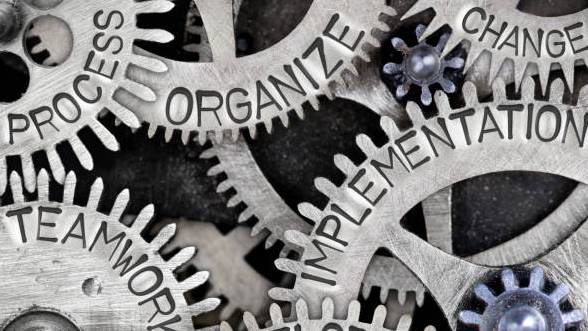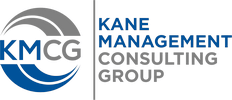KMCG Change Management

KMCG’s Change Management methodology is based on lessons learned from executing new initiatives across all departments within venture backed startups and Fortune 50 companies. The following process was developed to help organizations identify, prioritize and measure initiatives that required changes in resources, processes or overall go to market strategies.
Organizations don’t change, individuals do. No matter how large the project, the success of that project ultimately lies with each employee and their ability to incorporate and effectively manage change. Effective change management requires an appreciation of how individuals perceive the reasons for, and the significance of, the proposed changes.
While change happens one individual at a time, having a quantifiable process that can help facilitate change across departments ensure maximum benefit while minimizing disruption. Without a structured approach, change management will be limited to only communication and training.
MODEL FOR CHANGE
The following steps represent a guideline for enabling individuals, teams and companies to define and quantify necessary change.
Identify
Prioritize
Justify
Measure
When an organization undertakes Change Management as an initiative, clarity and accountability is critical. By engaging individuals affected by the proposed change(s) in the Priority Objective exercise ensures a comprehensive review of the issues resulting in a validated list of objectives with appropriate priorities and realistic metrics for objective attainment.
THE 3-PHASE PROCESS: A STRUCTURE FOR ORGANIZATIONAL CHANGE
KMCG’s organizational change management process was built in three phases that a project or change manager can work through for the changes and initiatives they are supporting. The methodology includes research-based assessments and templates to support each phase, as well as guidance for effectively completing each step.
1.
The first phase provides the situational awareness that is critical for creating effective change management plans.
Preparing for change
The first phase in KMCG’s methodology helps teams to prepare for designing change management plans. It answers these questions:
- “Scope of change management required for this project?”
- “Who is impacted by this initiative and how are they impacted?”
- “Who are the principals or sponsors required to make this initiative successful?”
The outputs of the phase
Provides insight into the change at hand, its size, scope and impact using the output from the Priority Objective exercise.
Offers a view of the organization being impacted and any specific attributes that may challenge the success of the project.
Identify the number and define the roles of change management resources required for the effort and where they are positioned in relationship to the project team and project sponsor
Identify the leaders across the organization who will need to act as sponsors of the proposed change. Identify possible challenges with certain leaders and start to formulate plans to get those leaders on board and actively sponsoring the change
Identify the groups of individuals being impacted by the change, in what ways they are being impacted, and unique challenges you may face with this group in the project.
Based on the assessments in this phase, a strategy that outlines the scope of the change management effort.
2.
The second phase focuses on creating plans that will integrate with the project plan.
Managing change
The second phase focuses on creating plans that will integrate with the project plan. These change management plans illustrate the steps needed to support the individual resources being impacted by the project. Based on KMCG’s research, there are five plans that help individuals moving through the Change Management Model.
Change management plans
Communications are a critical part of the change process. This plan articulates key messages that need to go to impacted individuals. It also identifies who will send the messages and when, ensuring employees are getting messages at the right time about the change from the appropriate, credible sponosors/leaders.
Outlines the actions required from the project’s primary sponsor and the coalition of sponsors across the business to help executives be a visible sponsor of the proposed change(s). The guide provides details on when and where leaders need to be present, what communications they should send, and which peers across the coalition they need to align with to support the change.
Training is a required part of most changes, and is critical to help individuals and teams build the knowledge base and skill set required adopt the proposed change(s). The training plan identifies who will need what training and when. It is important that the training plan be sequenced in a way that allows for awareness prior to training.
The coaching plan outlines how to engage with and prepare managers to lead the change within their own teams. Managers play a significant role in aiding the change management efforts however, they need to be engaged as employees first and provided the necessary time to work through their own change process for their areas of responsibility. This experience will help managers to lead the same change process with their own teams.
3.
The third phase helps create specific action plans.
Reinforcing change
The third phase helps create specific action plans for ensuring that the change is sustained. In this phase, project and change teams develop metrics and mechanisms to measure how well the change is being adopted, identify and correct gaps and celebrate success.
The actions of the phase
As the change is being implemented and the project is going live, it is important to establish metrics to monitor how teams are adopting the change.
If gaps are identified and change is not being fully adopted, the change and project team must act to address the gaps. It is important to remember the Priority Objectives in this phase and identify and address the root cause of the gap.
It’s common for individuals to revert to old habits after successfully adopting change, reinforcement mechanisms may be implemented to prevent this from occurring. Reinforcement mechanisms can include continued compliance measuring, ongoing training and coaching and regular weekly/monthly/quarterly reviews to track progress.
It’s important to recognize the challenging work people have put in to embracing change. Every person and organization are different, so it is important to look for means of recognition that will resonate with the individuals.
In addition to recognizing the achievements of individuals and groups who have changed successfully, it is important to publicly highlight the success of the initiative and provide opportunity to celebrate the hard work that went into getting to a new future state.
As is common in project management, a post review of the change management efforts helps to identify strengths and opportunities to be replicated in future projects.
